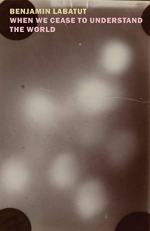|
This section contains 1,290 words (approx. 4 pages at 400 words per page) |

|
Summary
“Prussian Blue” opens with a brief discussion of Hermann Göring, a Nazi leader addicted to an analgesic in the aftermath of the Second World War. Faced with the end of the war, many of the Nazi elite chose “a quick escape” (10) through cyanide-induced suicide. Göring himself, just prior to his execution, bit down on a capsule of cyanide. Adolf Hilter, worried that someone had altered his store of cyanide in order to make his death more painful, fed cyanide to his dog before taking it himself.
Labatut then further describes the history of cyanide. He notes the relationship between cyanide and the first synthetic pigment, Prussian Blue. A Swiss dyer, Johann Jacob Diesbach, discovered the pigment by mixing potash with animal remains. The pigment revolutionized the European art scene because it provided an affordable option “to depict the robes of the angels...
(read more from the Chapter 1 Summary)
|
This section contains 1,290 words (approx. 4 pages at 400 words per page) |

|




